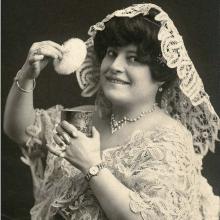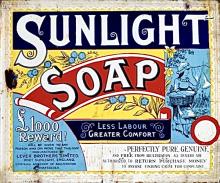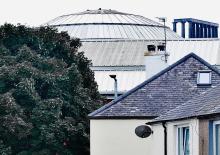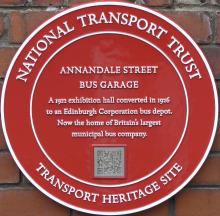
Future potential, squashed present, thrills on horseback
As noted in last week's article, in the summer of 1925, Edinburgh politicians, officials and commentators had reacted with barely suppressed excitement to the news that the Kelviin Halls in Glasgow had burned down.
The scale of destruction and the length of time it would take to clear and rebuild the venue meant that the Scottish Motor Trade Association would have to switch its annual motor show to the Industrial Hall and Waverley Market for the eight days of 13–21 November 1925.
This would be the largest and most prestigious event in the short history of the capital's first purpose-built exhibition space on Annandale Street. Hurried preparations were set in train.
In the meantime, the Scottish National Allotments Show and Royal Caledonian Horticultural Society Great International Flower Show would blossom here between 9 and 11 September.
The event was opened by HRH the Duchess of York. With around 5,000 entrants for the various competitions, the Industrial Hall was full to bursting and additional accommodation (in the form of a large marquee) was hastily erected on vacant ground at the rear of the hall.
On 10 September, the Scotsman reported as follows.

PROFUSION OF BLOOMS.
NATURE’S ARTISTRY.
The fragrance of the massed exhibits meets one at the doorway. That in itself is an aesthetic exhilaration at the International Fruit and Flower Show.
In this inviting atmosphere, the eye may proceed to appreciate the countless examples of Nature’s artistry in form and colour, which have been arranged in inexhaustible and almost bewidering profusion on the stands and terraces of the show.
A VARIED PROFUSION
The ample space which the Industrial Hall provides has been well employed. The general effect on entering is one of both profusion and opulence.
The exhibits have been arranged with an effect of symmetry. The central feature, which occupies a large amount of the floor space, is the special exhibit of the City of Edinburgh, for which the superintendent of Edinburgh’s parks and gardens, Mr J. T. Jeffrey, is responsible.
A first glance suggests that a portion of the famed Princes Street Gardens have been transported bodily into the hall. Here are stretches of turf, winding walks, steps, and terraces, with fountains spraying in the centre, while the eye is allured by harmonious colour arranged in effective masses.
In wider circles round this central feature are the tables covered with the exhibits in competition, while beyond these again, forming fairy-like floral terraces are the special exhibits of the principal horticultural forms.
This national exhibition was the kind of event for which the Industrial Hall's commercial model had been planned. Its success was welcomed, and the arrival of similar events in future was cheerfully anticipated. But it was yet another spectacular equestrian entertainment which drew the crowds later that month.
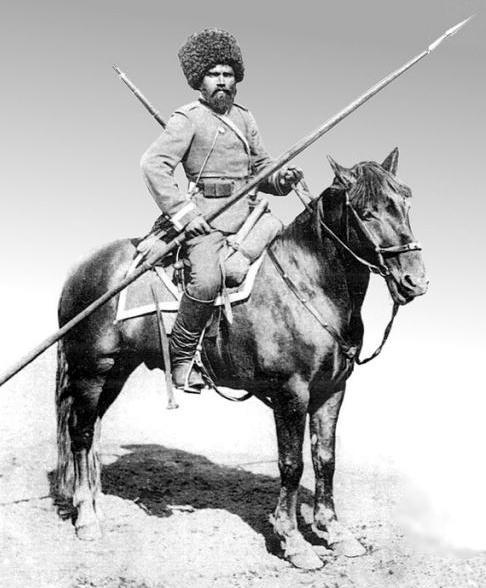
COSSACKS IN EDINBURGH.
THRILLING PERFORMANCE.
The magic of a name acted with great potency in Edinburgh yesterday. The Cossacks!
Who has not been stirred by tales of these Russian horsemen? Thousands of holidaymakers thronged through the sunlit streets yesterday forenoon to catch a glimpse of the [250] Cossacks in a preliminary procession, and the Industrial Hall, Annandale Street, was filled in the afternoon and evening by audiences who witnessed thrilling performances.
Feats that had only legendary associations to the onlookers were performed before their eyes. The daring and cleverness of the horsemen were amazing, and thrill followed thrill in a manner that made cowboy horsemanship on the cinema screen seem very ordinary.
Nothing quite like it has been seen in the realm of entertainments. There is a suggestion of the circus ring, but the performance is invested with a dignity that makes it distinctive, and conveys a hint of the story that lies behind. The opening parade is carried through with impressive military preceision. Dressed in their familiar garb, the Cossacks ride into the arena preceded by their military band, and a party of about a hundred choristers who take up the melody in unison with the instrumentalists.
At the head is a striking figure, dressed in black, and mounted on a lithe steed. He calls to mind those war-time pictures of Russian troops on the march, their General riding in advance.
It is the Russia of pre-revolution days these gallant men represent, and the presence of representatives of Russian nobility in the party emphasises this aspect. There is a General who was formerly Chief of Staff of the Russian Imperial Army; another General who commanded the Personal Bodyguard of the Tsar, and was formerly Minister of War; a Colonel who received the British Military Cross for his services at Basrah in 1916; and a Colonel who was one of the last to see the Tsar in prison before he was murdered by the Bolsheviks.
The company includes Djighits (trick riders), who belonged to the cream of the Russian Army, and were the Tsar’s picked horsemen. Their skill in the saddle is wonderful. They dash across the arena at express speed, and do all sorts of astonishing things.
At one moment they may be heading a charge standing in the saddle; the next they appear to be hanging on by their toes. They throw their little bodies about while their mounts gallop at top speed. Pyramids on horseback look simple to these intrepid riders, and one of their most daring feats of horsemanship is accomplished with keen-looking sabres in their mouths. Picking up tiny scarves from the ground as they gallop past is another trick at which they are expert.
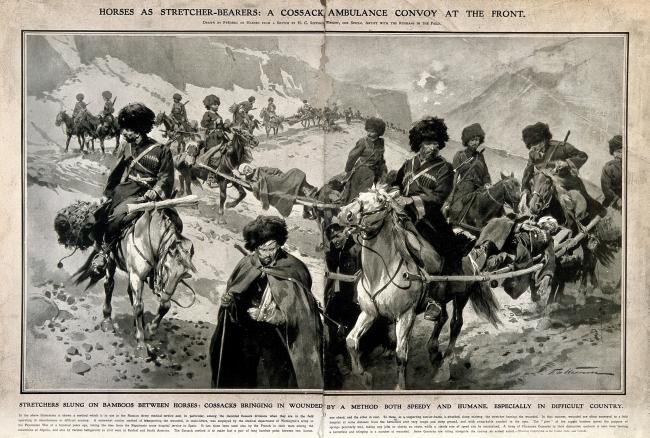
'The Djighit Ambulance' is a vivid little war-time tableau. A Cossack falls wounded. The wounded man is observed, and another horseman gallops to his aid. As the rescuer dismounts, his horse rolls down at a word, the wounded man is placed across the animal’s back, and in a second wounded and ambulance man are speeding away like the wind. Yesterday’s audiences were enthusiastic in their appreciation of the Cossacks’ cleverness.
Variety is lent to the entertainment by the Cossack choir and band. Russian folk-songs are rendered with impressive effect, and typical Russian dances are also a notable feature.
The Cossacks are to be at the Industrial Hall for two weeks and their performance is given in the afternoon and evenings.
Such was the success of the show that performances were extended for an additional week. Tellingly, however, the Scotsman noted on 23 September that the head of the human pyramid had had to be reduced as the roof of the Industrial Hall was rather low for a pyramid of usual dimensions to be constructed.
The size of the Industrial Hall – its height and capacity – had again constrained what kind of events could be staged here and how. Doubts were surfacing as to whether the Annandale Street venue could really cope with the looming Motor Show.
Read again here on 26 September to find out what happened next.
Image top-right: Wikipedia. Image of blooms: Wikipedia.
Image of Cossack ambulance: Wikimedia.
For previous coverage see:
Industrial Hall (1)
Industrial Hall (2)
Industrial Hall (3)
Industrial Hall (4)
Industrial Hall (5)
Industrial Hall (6)
Industrial Hall (7)
